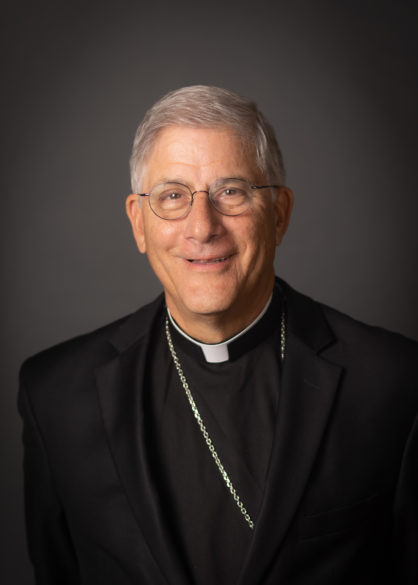By Bishop Joseph R. Kopacz, D.D.
On the first Pentecost Sunday, the Holy Spirit raised up Peter and the 11 apostles from the midst of the other disciples including the Blessed Mother – all who were ablaze with the fire of God’s love.
From the heart of the Church of the New Covenant Peter addressed the crowds assembled in Jerusalem with the first proclamation of the Gospel of Jesus Christ, crucified and risen.

Nearly 2,000 years later on a far different stage, the successor of Peter – Pope Leo XIV, raised up by the Holy Spirit from the heart of the church and surrounded by many successors of the apostles, his brother cardinals and bishops, addressed the crowds not only assembled in Rome, but also the hundreds of millions throughout the world with the words of the crucified and risen Lord. “Peace be with you.”
What other Head of State has such a hope-filled impact at the outset of their public office?
The next morning in the Sistine Chapel – where the Holy Spirit led cardinals had elected Leo XIV – the day-old Holy Father celebrated Mass and shared his initial reflections on his vision for the church, the Body of Christ. It is often out of sync with the enigma of the world’s resistance to the Good News, while at the same time straining under the weight of the irrepressible yearning for what the world cannot give.
Pope Leo preached the following in his first homily: “In a particular way, God has called me by your election to succeed the Prince of the Apostles, and has entrusted this treasure to me so that, with his help, I may be its faithful administrator (cf. 1 Corinthians 4:2) for the sake of the entire mystical Body of the Church. He has done so in order that she may be ever more fully a city set on a hill (cf. Revelation 21:10), an ark of salvation sailing through the waters of history and a beacon that illumines the dark nights of this world.
“And this, not so much through the magnificence of her structures or the grandeur of her buildings – like the monuments among which we find ourselves – but rather through the holiness of her members. For we are the people whom God has chosen as his own, so that we may declare the wonderful deeds of him who called us out of darkness into his marvelous light.” (cf. 1 Peter 2:9)
Indeed, all of the baptized who are temples of the Holy Spirit, brothers and sister of the Lord Jesus, and children of God share in this mission.
Gazing soberly upon the world that he has profoundly loved, Pope Leo XIV further reflected: “There are contexts where it is not easy to preach the Gospel and bear witness to its truth, where believers are mocked, opposed, despised or at best tolerated and pitied. Yet, precisely for this reason, they are the places where our missionary outreach is desperately needed. A lack of faith is often tragically accompanied by the loss of meaning in life, the neglect of mercy, appalling violations of human dignity, the crisis of the family and so many other wounds that afflict our society.”
Pope Leo’s words resonated throughout the Sistine Chapel on that first morning and will continue to echo in the church and in the world during his papacy. They are caught up in the spirit of this wonderful Jubilee Year of Hope – a hope that does not disappoint because “the love of God has been poured into our hearts through the Holy Spirit.” (Romans 5:5)
At Pentecost and always, Pope Leo reminds us that “the more we let ourselves be convinced and transformed by the Gospel, allowing the power of the Spirit to purify our heart, to make our words straightforward, our desires honest and clear, and our actions generous – the more capable we are of proclaiming and living its message.”
May the Holy Spirit continue to surprise the church and the world with the hope and peace that the world cannot give.


